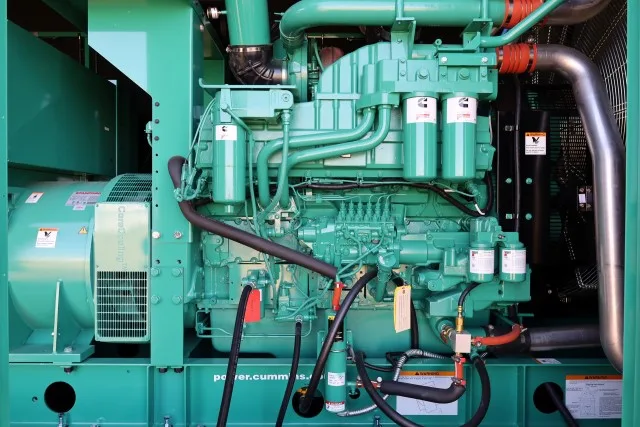Diesel generators are critical for supplying backup power in emergencies and for powering remote locations lacking grid access. Whether for businesses, medical facilities, or industrial operations like oil fields and mining sites, selecting the right generator requires an understanding of its technical specifications. This guide breaks down key concepts like kilowatts (kW), kilovolt-amperes (kVA), and power factor (PF) to help you make an informed decision.
Key Terms Explained

1. Kilowatts (kW)
- Measures the real electric power supplied by the generator.
- Represents the power actually used by equipment and appliances.
2. Kilovolt-Amperes (kVA)
- Measures the apparent power, which includes both real power (kW) and reactive power.
- Indicates the total electrical power generated, including unused power caused by inefficiencies.
3. Power Factor (PF)
- The ratio between real power (kW) and apparent power (kVA).
- Formula: PF = kW / kVA
- Indicates how efficiently the generator’s power is being used.
- Example: If a building consumes 1900 kW and 2000 kVA, the power factor is 0.9 (90%).
Typical Generator Power Factor
- Most diesel generators are rated with a power factor of 0.8, meaning 80% of the apparent power is converted to usable real power.
Understanding Generator Ratings
Nameplate Information
- Diesel generator nameplates include kW, kVA, and PF values.
- These ratings define the generator’s operating conditions based on the connected load.
Converting Between kW and kVA
- To convert kVA to kW:
kW = kVA × Power Factor - To convert kW to kVA:
kVA = kW ÷ Power Factor
Factors Limiting Generator Output
1. Diesel Engine Capacity
- The engine determines the maximum kW output.
- Exceeding the rated kW can damage the engine and reduce efficiency.
2. Generator Windings
- The windings limit the maximum kVA output.
- Operating beyond this can lead to overheating and equipment failure.
Understanding Leading and Lagging Power Factors
Lagging Power Factor
- Occurs when voltage leads current.
- Common with inductive loads such as motors and transformers.
- Diesel generators are designed to handle lagging power factors efficiently.
Leading Power Factor
- Occurs when current leads voltage.
- Common with capacitive loads such as capacitor banks and batteries.
- Can cause voltage instability and may trigger automatic protections, disconnecting the generator.
Practical Implications
- Most buildings have more inductive loads, resulting in a lagging power factor.
- Consult an experienced electrician or engineer for generators operating with capacitive loads to avoid instability.
Importance of Proper Generator Sizing
Why It Matters
- Proper sizing ensures the generator operates efficiently without being overloaded or underutilized.
- Optimizes performance, fuel consumption, and lifespan.
Professional Consultation
- Always consult a professional electrical engineer to size your diesel generator. This prevents mismatches in power needs and ensures the generator’s specifications meet the requirements of the connected load.
Summary of Key Points

- kW vs. kVA:
- kW measures real power used by devices.
- kVA measures total apparent power (real + reactive).
- Power Factor:
- The efficiency of the generator’s power usage.
- Most diesel generators have a PF of 0.8.
- Conversion:
- kW = kVA × PF
- kVA = kW ÷ PF
- Limits:
- Diesel engine capacity limits kW output.
- Windings limit kVA output.
- Leading/Lagging PF:
- Lagging PF (inductive loads) is common and suitable for diesel generators.
- Leading PF (capacitive loads) requires careful design to prevent instability.
- Sizing:
- Proper generator sizing optimizes efficiency and longevity.
- Consult professionals for accurate assessments.
Contact Generator Source Today!
With over 40 years of experience, Generator Source offers expert advice, support, and a vast inventory of new and used diesel generators. Reach out to ensure your generator meets your specific power needs.